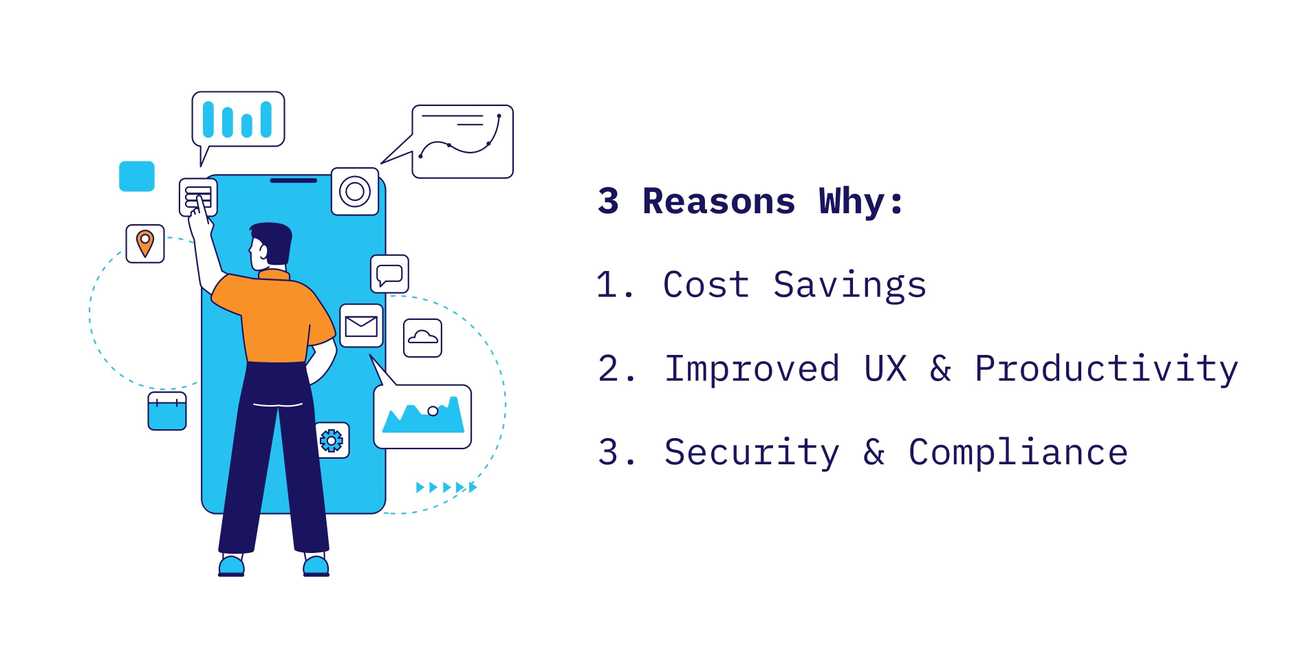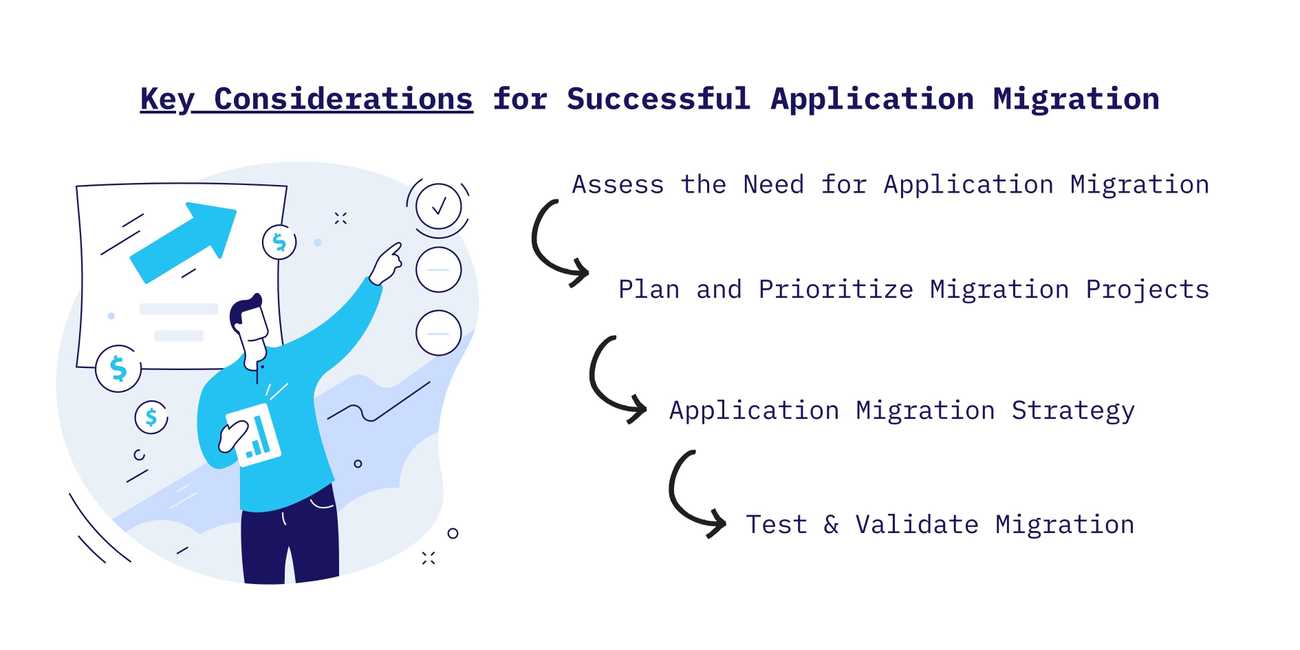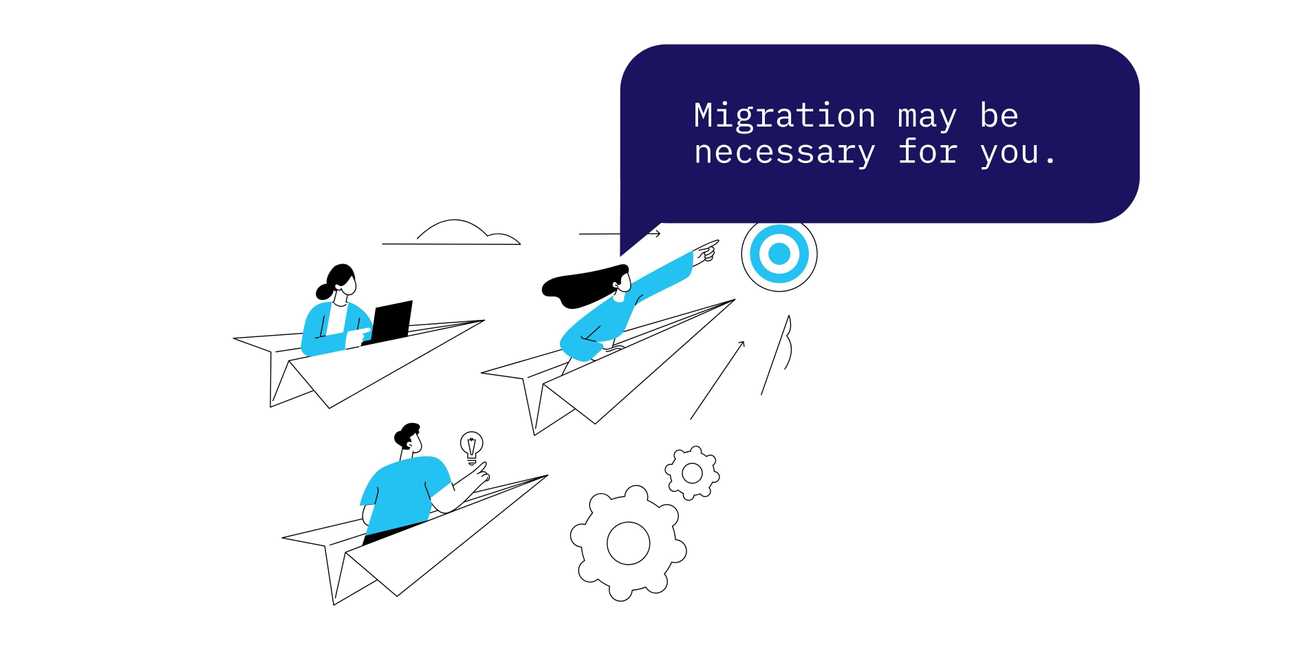Why Application Migration is Essential for Tech Companies
Staying competitive and meeting the ever-evolving needs of users is crucial for tech companies. One essential way they achieve this is through application migration. By embracing modern platforms, companies can unlock a world of possibilities.
Application migration not only boosts performance but also enhances security and compliance. Outdated systems may leave companies vulnerable to cyber threats, lacking the necessary defenсes to protect against evolving risks. Cybercriminals can install malware, steal sensitive data, and gain unauthorized access to your systems by using weaknesses in obsolete software - software that your company may be using extensively.
Why Application Migration is Essential
Application migration is the process of transitioning applications from older or outdated platforms to newer and more advanced ones. By migrating to modern platforms, businesses can improve application performance, scalability, and responsiveness, resulting in a better user experience.
This migration also enhances security and regulatory compliance by implementing robust security measures and protecting sensitive data.
3 Reasons Why Application Migration is Essential for Your Business
1. Cost Savings
Outdated systems often require extensive maintenance and support, resulting in long-term costs. By migrating to modern platforms, businesses can streamline processes, reduce operational costs, and optimize resource allocation.
Modern platforms also offer more efficient and scalable infrastructure, allowing businesses to scale their applications without significant expenses.
For example, modernizing cloud environment on Microsoft Azure PaaS can result in a three-year 228 percent return on investment (ROI), with a payback period of 15 months. Additionally, businesses can experience a 50 percent increase in the speed of application development and a 40 percent reduction in app-dev related infrastructure costs.
Outdated systems often struggle to keep pace with the latest technologies and software, leading to compatibility issues. 59% of IT professionals identified compatibility issues as a top challenge when maintaining legacy systems. These compatibility issues hinder the organization's ability to leverage new tools and advancements, resulting in reduced efficiency and competitiveness.
2. Improved User Experience and Productivity
Outdated systems may lack the necessary features and functionalities to meet evolving user expectations. By migrating to modern platforms, businesses can leverage the latest technologies and advancements to enhance their applications.
This includes improving performance, scalability, and responsiveness, ultimately resulting in a better user experience.
Business needs evolve rapidly, and outdated systems may lack the flexibility and scalability required to keep up with these changes. 59% of IT decision-makers highlighted the inability to scale as a top challenge when maintaining legacy systems. This limitation can result in inefficiencies, missed growth opportunities, and a loss of competitive advantage.
Maintaining outdated systems becomes increasingly challenging as time goes on. It becomes harder to find support and resources for maintenance and troubleshooting, leading to prolonged downtime and increased costs. 58% of IT professionals cited maintenance and support challenges as a top concern. These challenges strain the IT team and negatively impact productivity.
3. Enhanced Security and Compliance
Outdated systems are more vulnerable to cyber threats and may lack the necessary security measures to protect against evolving risks.
Phishing, password hacking, and adware are among the most common forms of attack against businesses in 2023. Companies using outdated systems faced an average cost of $4.94 million per data breach. This highlights the financial and reputational risks associated with neglecting system updates and the importance of prioritizing cybersecurity.
Here are some interesting stats for you to consider:
- 41% of businesses have experienced phishing
- 37% have experienced password hacking
- and 30% have been victims of adware
Your digital infrastructures and assets may be negatively impacted by these things - if not all. By migrating to modern platforms and software architectures, businesses can implement robust security measures and ensure compliance with industry regulations, safeguarding their data and customer information.
Key Considerations for Successful Application Migration
To help you navigate the process of a successful application migration, we've outlined the key considerations you need to keep in mind. From assessing the need for cloud migration services to choosing the right strategy, these steps will ensure a smooth and efficient transition.
1. Assess the Need for Application Migration
When evaluating the need for application migration, it is crucial to consider several factors:
Analyze the current performance and scalability of your applications
Assess the efficiency and effectiveness of your existing applications. Look for any performance bottlenecks or scalability limitations that might hinder your ability to meet the evolving needs of your users. Identify areas where application and cloud migration could lead to improved performance and scalability.
Identify potential benefits that can be achieved through migration
Determine the specific advantages and value that application migration can bring to your organization. Consider factors such as enhanced security, improved user experience, significant savings, and increased flexibility. Identify how migrating to modern platforms can align with your business goals and help you stay competitive in the market.
Make informed decisions about whether to proceed with migration or explore alternative solutions
After analyzing the performance and potential benefits, carefully evaluate whether application migration is the most suitable solution for your organization. Consider other alternatives, such as optimizing your existing applications or developing new ones. Assess the feasibility, costs, and risks associated with each option to make an informed decision.
2. Plan and Prioritize Migration Projects
When planning and prioritizing application and cloud migration projects, there are several key considerations to focus on:
Identify applications or systems that are most suitable for migration
Conduct a thorough assessment of your existing applications and systems to determine which ones would benefit the most from migration. Consider factors such as outdated technology, performance bottlenecks, scalability limitations, and compatibility issues. Prioritize applications that are critical to your business operations or have the potential to drive significant value.
Create a roadmap with a step-by-step process and timeline
Develop a detailed plan that outlines the necessary steps and timeline for the migration process. Break down the project into manageable phases and clearly define the tasks, dependencies, and milestones. This roadmap will serve as a guide to ensure a structured and organized approach to the migration.
Consider the complexity of applications, potential impact on business operations, and resource availability
Take into account the complexity of each application and the potential impact on your business operations during the application and cloud migration process. Evaluate the resources and expertise required to successfully complete the migration and ensure that they are available or can be obtained within the planned timeline. Consider any potential risks and challenges that may arise and develop contingency plans to mitigate them.
Ensure a smooth and efficient migration process by careful planning and prioritization
Prioritize the migration of applications based on their criticality and impact on your business operations. Consider dependencies between applications and systems and plan the migration accordingly. Allocate sufficient time for testing, troubleshooting, and user acceptance to minimize disruptions and ensure a seamless transition. Communicate the migration plan to all stakeholders and provide regular updates to keep everyone informed and engaged throughout the process.
3. Choose the Right Application Migration Strategy
When considering application migration, it is important to choose the right migration strategy that aligns with your organization's needs and goals. Here are further explanations of the available options:
Rehosting or Replatforming
This application migration strategy involves moving applications to a new computing environment without making any significant changes. It is a straightforward approach that focuses on migrating the application as-is to a different platform or infrastructure. Rehosting is often chosen when the main goal is to achieve cost savings or improve infrastructure reliability without requiring extensive modifications to the application.
Refactoring
Refactoring is the process of restructuring and optimizing applications for better performance and scalability. It involves making changes to the codebase and underlying architecture of the application while preserving its core functionality. Refactoring aims to improve the application's efficiency, maintainability, and scalability. This application migration strategy is typically chosen when the application requires significant improvements to meet evolving business needs or leverage new technologies.
Rearchitecting
Rearchitecting involves redesigning applications to leverage modern technologies and architectures. It goes beyond simple code modifications and involves rethinking the entire application's structure and design. This strategy allows organizations to take advantage of cloud-native architectures, cloud environment, microservices, and other modern approaches. Rearchitecting is chosen when there is a need for a more fundamental transformation of the application to maximize its potential and enable future growth and innovation.
Each application migration project strategy has its own benefits and considerations. It is important to carefully evaluate your organization's specific requirements and objectives before selecting the most suitable approach. By choosing the right migration strategy, you can ensure a successful and efficient migration process that aligns with your organization's needs and goals.
4. Test and Validate Migrated Applications
When it comes to thoroughly testing and validating migrated applications, there are several important steps to consider:
Perform functional testing
This involves testing the application to ensure that it functions as intended and meets the specified requirements. It includes verifying that all features and functionalities work correctly and that the application behaves as expected in different scenarios.
Perform performance testing
Performance testing is crucial to ensure that the migrated application can handle the expected workload and perform efficiently. It involves testing factors such as response time, scalability, and resource usage under different load conditions. This helps identify any bottlenecks or performance issues and allows for optimization and improvements.
Perform compatibility testing
Compatibility testing ensures that the migrated application works seamlessly across different platforms, browsers, and devices. It is important to test the application on various configurations to identify any compatibility issues and ensure a consistent user experience.
Identify and address potential issues
During the testing process, it is essential to identify any potential issues or bugs that may arise. This includes conducting thorough debugging and troubleshooting to resolve any issues before the application goes live. It is important to address these issues promptly to ensure a smooth and error-free user experience.
Application Migration is Necessary
It is crucial to highlight the significance of application migration project for your business and to minimize disruption. This application migration process not only ensures the seamless transition of migrating applications but also brings numerous benefits to your organization. By migrating your applications, you can enhance your operational efficiency, improve scalability, and stay up-to-date with the latest technological advancements. Moreover, it allows you to optimize your resources, reduce costs, and enhance your overall competitiveness in the market.
With this in mind, a new environment might be overdue for your business.
Therefore, it is highly recommended for you and your teams to seriously consider application migration for your organization. Embracing this approach can lead to significant improvements in the performance, security, and flexibility of your systems. It also presents an opportunity to leverage new features and functionalities that can drive innovation and business growth. By staying proactive and adopting application migration strategies, you can position yourselves for long-term success in a rapidly evolving digital landscape.







